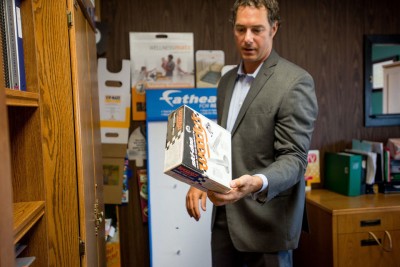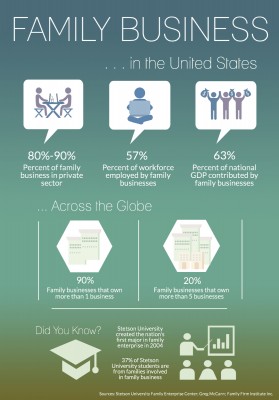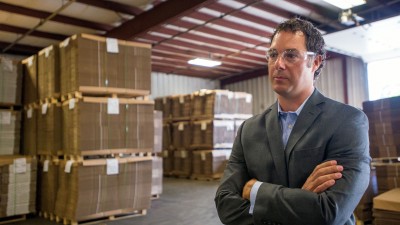Aligning With Values Helps Family Business Cohesion, Success
by Greg McCann, J.D.
Landaal Packaging Systems, a family enterprise based in Flint, Mich., focused almost exclusively on the corrugated box industry for more than half a century. After dramatic changes in both the family and the marketplace, the family began to shift its identity away from the box industry to focus more on the family itself. The United States corrugated paper industry was losing the battle with China, resulting in ever-shrinking margins and consolidation of firms. The family had prematurely lost three of the four siblings in the second generation. The Landaal family created an innovation center to help revitalize the local community, redirecting its focus from corrugated paper toward customized packaging, point-of-purchase displays and sustainable packaging.
Landaal’s story reflects a growing trend: Successful enterprising families are becoming more aligned with their values, more cohesive and more resilient in order to handle the greater stress and complexity arising from today’s exponential rate of change.
In a landmark global study published in 2012, The FFI/Goodman Longevity Study, 90 percent of the families who responded owned more than one business and 20 percent owned more than five. On average, those surveyed had changed their core business more than two times.
A colleague, Rich Morris, points out that in the past, one good business idea might sustain a family for three generations. Today, each generation will need to come up with three good business ideas just to keep up with the changing world.

As the family business changes, so will the family’s identity. A family like the Landaals may no longer self-identify as “the box people,” for instance, but rather as an enterprising family that deploys its talent, financial resources and networks in ways that align with its core values and purpose. Thus the family (rather than the legacy business) is viewed as the entity through which money flows and where entrepreneurial talent is cultivated.
To make this transition successfully, the family will need to reflect on and define its purpose and values. It should address not only the question, “What kind of business or enterprise do we want to be?” but also, “What kind of family do we want to be?”
The Haws Corporation, of Sparks, Nev., a successful manufacturer of drinking fountains for more than a century, has embarked upon a proactive approach to family governance. Recognizing the competitive advantage of being family owned, it uses its family governance to align the goals of the owning family with the board and management team while developing the next generation of family ownership.
The result has been an increase in the breadth and depth of business opportunities that they now pursue within and outside of their core business. Rather than remaining tied to their past, they are visioning the future and bolting on new businesses that will be more relevant to their next generation of family ownership. Investing in technology and bringing new solutions to their existing customers is helping to build a whole new enterprise that would not have been possible by simply continuing to invest in the “old” business.
Four Types of Cohesion
How might you involve your own family to more effectively and proactively respond to changes in your core industry? First, you should establish family cohesion and alignment. One model emerged from a 2008 study by Torsten M. Pieper and Joseph H. Astrachan. The study found families that have been in business for a century or longer tend to have high levels of cohesion in four areas.
- Family emotional cohesion: Family members get their most basic needs (for belonging, security and connection) met through the family, which functions and communicates well. These families convene family gatherings, engage in charitable activities as a group and take other steps to stay connected.
- Family financial cohesion: The family provides for its members through gifts, inheritance and other mechanisms.
- Business financial cohesion: The business provides benefits to the family through salaries, dividends and investment opportunities.
- Business emotional cohesion: Family members consider the business to be part of their identity. They have a sense of loyalty and stewardship to the family firm.
These four types of cohesion evolved over time in long-lasting family businesses, but they can be deliberately cultivated during the early stages of family enterprise.
How might your family create greater alignment, cohesion and resiliency? Family business leaders should consider three factors: innovation, awareness and practice.
Innovating With the Family
Innovation is change that creates value. Virtually every business must look at both incremental innovation (how to improve a store, a product or a service) and breakthrough innovation (how to go from Blockbuster to Netflix). The family must approach its enterprises with an innovative mindset.
 Family enterprises often resist change. Families tend to seek harmony and stability, which can easily lead to stagnation. Once the business enters its second generation, members can become risk-averse, sometimes to an extreme.
Family enterprises often resist change. Families tend to seek harmony and stability, which can easily lead to stagnation. Once the business enters its second generation, members can become risk-averse, sometimes to an extreme.
Innovation should be considered a crucial part of the family’s values and purpose. Given the impact of rapidly evolving technology, generational differences and a changing competitive environment, families must be open to rethinking their relationships to their enterprises.
Cleveland-based Bird Technologies, for example, operationalized its values through an ongoing practice of clarifying the family’s core values and translating them into business values. The non-family CEO reports periodically to the board and the shareholders on how business results were achieved in line with shareholder values. This operational, tangible and holistic integration of shareholder values with business function creates and sustains a culture that exhibits the four types of cohesion.
Deep Dive Into Awareness
Consider the time, energy, talent and reporting you devote to your business. Now compare that to the effort you make to enhance your family’s involvement in its enterprises.
A family system is highly complex. Each member brings to the table his or her unique behavior patterns, roles and ways to deal with stress. Along with this complexity comes greater interdependency, so stress and change in any part of the system affects the whole.
If this is not brought into awareness and considered in business choices, the family cohesion is put at risk and what could be a strategic advantage turns into a threat.
Family leaders should assess each individual’s identity and values—what drives them and how they contribute to the family’s individual and collective strengths, weaknesses and blind spots. How does the family cultivate and convey its character and align it with the family’s reputation? Each of these factors can be viewed relative to the four types of cohesion described above.
Families and their advisers can be tempted to rely too much on structure and outcomes and thus minimize the importance of process and innovation. Your family can’t outsource this self-analysis to a lawyer or accountant any more than your fitness coach can do your workout for you.
Planning, structures and policies can be productive after this deep dive into self-assessment. Otherwise, such planning is at best defensive and at worst a land mine waiting to be stepped on.
Too often, we resist dealing with the “soft” or human side of a business—the family—until there is a crisis. This reactive mindset should be replaced in family enterprises by a proactive model that builds momentum as entrenched communication patterns are identified and defined.
This proactive process deepens as the defenses and underlying emotions that fuel negative patterns are exposed. This creates an opening for rebuilding damaged relationships. The family will emerge with a better understanding of one another, a chance to build trust and commitment, and productive methods of communicating.
Ongoing Practice
If each year your family went away for a weekend to listen to fitness experts talk about the latest trends in exercise science—and that was all you did to stay in shape—what kind of condition would you be in? Let’s extend this analogy to your family enterprise: If you and your family don’t regularly undergo a process of assessment and strategic planning, your enterprise will not be healthy.
Just as you might start a fitness program by getting a thorough assessment, you can do the same with your family enterprise. What are your strengths, weaknesses and goals? You might factor both strength and cardio fitness into your workout regimen; similarly, you should factor values, trust, education and communication into your “family practice regimen.”
Everyone in the family must be willing to start out by working on himself or herself. To focus on “fixing” one family member will undermine true progress. The most effective way you can encourage another family member to take responsibility for and work on his or her own issues is by modeling the desired behavior.
Most of us exercise more effectively when we work out with others and when we have good coaching. You can find “workout buddies” by attending conferences and peer-group sessions, and a consultant can do the coaching. But remember, you still have to do the heavy lifting yourself.
Greg McCann, J.D., is the founder of the consulting firm McCann & Associates and founder and director (1998-2006, 2009-2014) of Stetson University’s Family Enterprise Center. He speaks, writes, consults and teaches on family enterprise.
This article originally appeared in Family Business Magazine’s Jan/Feb 2015 issue (Equip your family for success in today’s world) and is reproduced here with the permission of the publisher.




